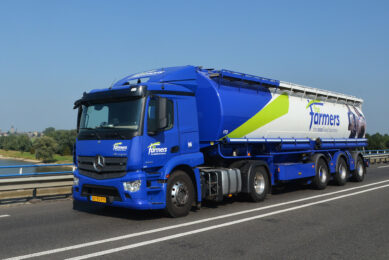Programming: For nerds and nutritionists?

When I hear ‘programming’, I think of people sitting behind a computer and doing software programming for many hours a day. But in this editors view, I actually want to briefly discuss the concept of ‘nutritional programming’, which is slightly different, and probably more interesting.
Nutritional programming refers to finding that nutrition and management during pregnancy of an animal (or human) and in the neonatal stages, can affect a range of different bodily functions. In human nutrition, this concept is widely studied with regards to programmed changes in the child’s body and the likelihood of becoming overweight and the occurrence of associated diseases in later life.
But the concept of nutritional programming is gaining more interest with feed companies, animal nutritionists and farmers also. It is about getting the right amount of feed and nutrients to the young animals (before and after birth) to make sure they perform better later on in life. It is not only about having the right genes (as cows do not profit 30-40% of their genetic potential for milk yield). Proper nutrition can have a significant impact and can trigger that animals do use their genetic potential better. Neonate animals should therefore not be neglected and times have passed that calves only get the left over milk or ‘bad milk’ after milking.
At the recently held LifeStart dairy calf symposium, this topic was extensively addressed by the speakers. Swiss veterinarian Martin Kaske for example said: “We should invest more in feeding the young calf, as this has a huge impact on subsequent performance in later life. At the moment, this is not the focus of the farmer (yet).” He also explained that higher feeding intensity in the first weeks of life has both short time as long term effects. The short term effect include better growing and healthier calves. On the longer term, effects are seen in better milk production, better mammary development and younger breeding age. For example: feeding a calf four litres of colostrum in the first six hours leads to a cows that can be inseminated half a month earlier. It also leads to 5% more cows reaching the third lactation.
Indeed, when seeking to maximise animal performance, it’s critical to optimise the neonate phase so as to deliver greater returns. It’s all about increased incomes from such things as reaching slaughter sooner, heavier animals or more milk production. In other words, the neonate phase in an animal’s life can have a significant effect on growth rate, feed conversion and milk production all of which have financial implication. In this case, I talk about calves, but obviously this also applies to other ruminants and pigs and poultry.
Nutreco (developer of the LifeStart programme), and organizer of the symposium, has recently started a long term study to investigate the effects of dairy calf nutrition on their research farm in the Netherlands. The key scientific principle behind LifeStart is nutritional (metabolic) programming. Researchers want to determine the long-term metabolic changes that are programmed by higher nutrient supply during the calf pre-weaning period and to define the impact on milk production through successive lactations. It is clear that neonate nutrition is in the picture again (and not only with Nutreco) and on top of feed companies’ agendas. And it was about time.











